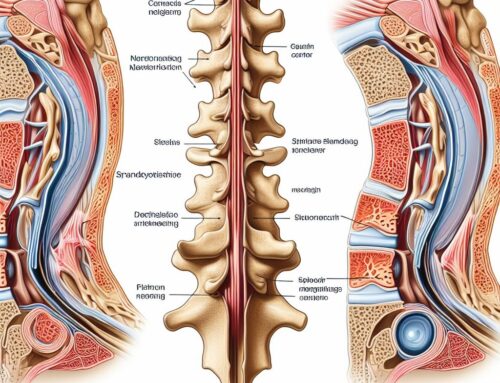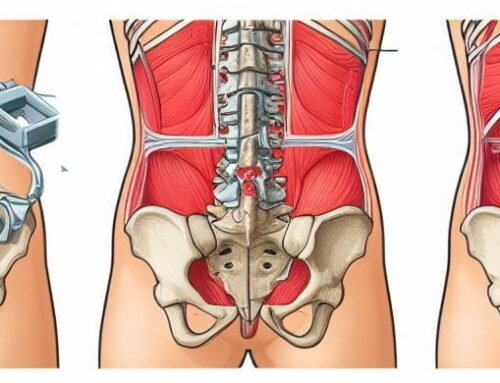Spondylolisthesis, a condition characterized by the forward or backward displacement of one vertebra over another, can be a source of considerable pain and discomfort. When faced with spondylolisthesis, individuals often find themselves at a crossroads, contemplating whether to pursue surgical intervention or opt for non-surgical treatment methods. This article serves as a comprehensive guide, helping you understand the factors to consider when making the choice between spondylolisthesis surgery and non-surgical treatment, empowering you to make an informed decision tailored to your unique needs and circumstances.
Unraveling Spondylolisthesis
What is Spondylolisthesis?
Spondylolisthesis is a spinal condition where one vertebra moves out of its normal position, often causing pain, muscle weakness, and a host of other symptoms. It can occur at any level of the spine but is most common in the lumbar (lower back) region.
The Impact of Spondylolisthesis
Spondylolisthesis can have a profound impact on an individual’s life, leading to discomfort, reduced mobility, and sometimes, nerve compression. The severity of symptoms can vary widely, from mild to debilitating.
When is Surgery Considered?
Indications for Spondylolisthesis Surgery
Spondylolisthesis surgery is typically considered when:
- Conservative Treatments Fail: If non-surgical treatments like physical therapy, medications, and lifestyle modifications do not provide adequate relief, surgery may be the next step.
- Nerve Compression: When spondylolisthesis causes nerve compression, leading to symptoms like radiating leg pain, muscle weakness, and numbness, surgery may be necessary to relieve pressure on the affected nerves.
- Severe Pain: If the pain associated with spondylolisthesis becomes chronic, unrelenting, and significantly impairs daily activities, surgery may be considered to alleviate pain.
- Progressive Neurological Deficits: In cases where neurological symptoms worsen despite non-surgical treatments, surgery may be the best option to halt further deterioration.
Surgical Options
Spondylolisthesis surgery typically involves spinal fusion, which aims to stabilize the affected vertebrae and correct the misalignment. Common surgical approaches include:
- Posterior Lumbar Interbody Fusion (PLIF): An approach from the back (posterior) where the damaged disc is removed, bone graft material is inserted, and metal hardware is used for stability.
- Anterior Lumbar Interbody Fusion (ALIF): A front (anterior) approach that removes the damaged disc, replaces it with a bone graft, and uses metal hardware for fusion and stability.
- Transforaminal Lumbar Interbody Fusion (TLIF): A similar approach to PLIF, performed through a single incision in the back, with the goal of decompressing nerves and stabilizing the spine.
- Laminectomy and Fusion: A combination of laminectomy (to relieve nerve pressure) and fusion (to stabilize the spine) is used in cases of severe nerve compression.
Recovery After Spondylolisthesis Surgery
Recovery from spondylolisthesis surgery can vary depending on the specific procedure and individual factors. Physical therapy, post-operative restrictions, and follow-up appointments with the surgeon are common components of post-surgery care.
Exploring Non-Surgical Treatment Options
Non-Surgical Approaches
Non-surgical treatments for spondylolisthesis aim to alleviate pain, improve function, and enhance an individual’s quality of life. These approaches often include:
- Medications: Over-the-counter pain relievers, muscle relaxants, and prescription medications can help manage pain and inflammation associated with spondylolisthesis.
- Physical Therapy: Physical therapists design exercise programs to strengthen the muscles supporting the spine, improve flexibility, and correct posture, reducing stress on the spine.
- Lifestyle Modifications: Activities and habits may be adjusted to avoid positions or movements that worsen symptoms, such as lifting techniques and posture improvements.
- Weight Management: Maintaining a healthy weight through diet and exercise can alleviate pressure on the spine and reduce discomfort.
When to Choose Non-Surgical Treatment
When Non-Surgical Treatment is Appropriate
Non-surgical treatment is often appropriate when:
- Symptoms Are Mild: In cases of mild spondylolisthesis with manageable symptoms, non-surgical treatments can provide sufficient relief.
- Conservative Measures Are Effective: When non-surgical treatments effectively alleviate pain and discomfort, there may be no need for surgical intervention.
- Risk Factors for Surgery Exist: In cases where surgery poses greater risks due to the individual’s health or age, non-surgical treatment may be the safer choice.
Preventive Measures
Once symptoms are under control, maintaining a healthy lifestyle, good posture, and regular exercise play crucial roles in preventing spondylolisthesis from worsening.
Conclusion: Making the Right Choice
Spondylolisthesis surgery and non-surgical treatment each have their place in the management of this condition. The choice between the two depends on the severity of your symptoms, the effectiveness of conservative treatments, and your individual health factors. It’s essential to work closely with your healthcare provider to make an informed decision tailored to your specific needs and goals, whether that involves surgical intervention or non-surgical treatment.





Get Social